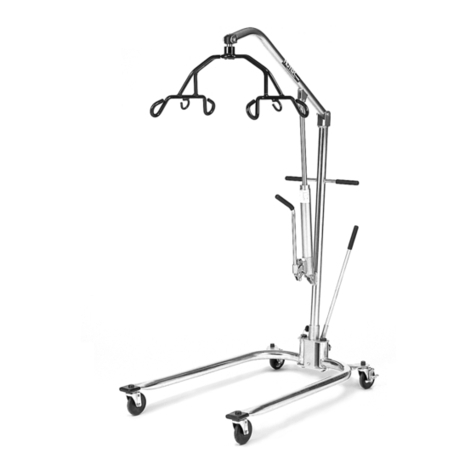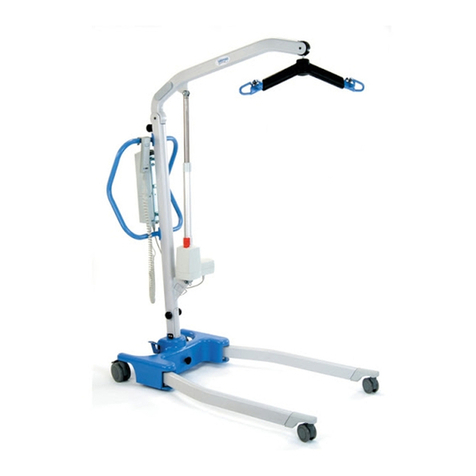
3
English Hoyer®
HPL500
1. Introduction: About Your Li
Each HPL500 lift is fully assembled, load tested and certified before being packed/shipped.
The packing consists of a strong, purpose built carton that is used for both export and domestic
markets to ensure the safe arrival of the lift. Documents are supplied and packed with each lift
and should be kept safely for future reference.
• TEST CERTIFICATE • USER MANUAL
The TEST CERTIFICATE is an important document and should be kept for reference purposes.
To properly maintain your lift please refer to the maintenance schedule included in this docu-
ment. If you are at all unsure what your country’s servicing requirements are, please check with
your dealer and/or a local government agency.
Statement of Intended Use
The intended use of this lifting device is for the safe lifting and transfer of an individual from
one resting surface to another (such as a bed to a wheelchair). Joerns Healthcare recom-
mends that the transfer of a patient is fully risk assessed and conducted safely over a short
distance only.
The Hoyer HPL500 is suitable for patients in the SITTING, SITTING/RECUMBENT and
RECUMBENT positions.
The Hoyer HPL500 is an electrically operated patient lift, designed to support and promote safe
patient handling and transfer for both the patient and carer.
The Hoyer HPL500 lift incorporates a 6-point cradle, loop style spreader bar, as standard and
is designed to be used in conjunction with the Hoyer range of slings. The examples of slings
suitable for use with this device are listed as follows:
• Hoyer Quickfit • Hoyer Access
• Hoyer Full Back • Hoyer Comfort
• Hoyer Quickfit Deluxe
• Hoyer Long Seat
Expected Service Life
The HPL500 lift is designed and tested for a minimum service life of seven (7) years, subject to
the use and maintenance procedures stated in this manual. Use, other than in accordance with
these instructions, may compromise service life.





























